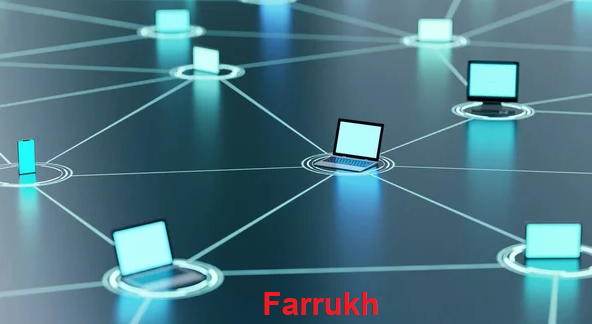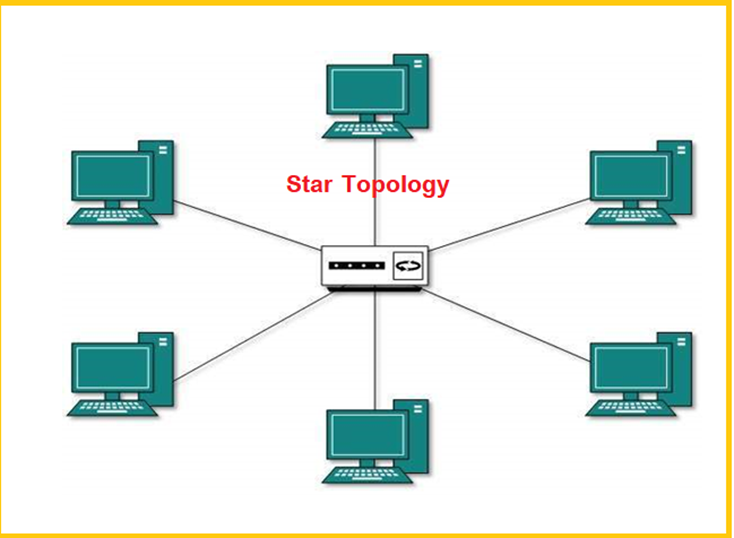Computer Network Topologies
By
Md. Farrukh Asif
Click Me to Explore
Detailed description of the Computer and its Components.
(Input Units)
A Complete and Detailed Definition with examples of Output
Devices (New Tech based)
The Central Processing Unit (CPU) Latest Enquiries
Memory Unit (I/O) Devices by Farrukh
The Basic Terminologies of Computer by Md. Farrukh Asif
Generation of Computer by Md. Farrukh Asif
The Evolution of Computer Languages(Part-I) by Md. Farrukh
Asif
The Evolution of Computer Languages(Part-II) by Md. Farrukh
Asif
Computer Network Topologies
By Md. Farrukh Asif
Communication Protocols
by “Md Farrukh Asif”
Basic Computer's Features and Use by Md. Farrukh Asif
Operating System and its Functionality: by Md. Farrukh Asif
Batch OS and Time Sharing OS by Md. Farrukh Asif
Real-Time Operating Systems (RTOS): Explained Simply
The Wider
Use of Microkernel and its Components in OS
Fundamentals of Computer MCQs with Answers
Ø In
this article we will learn about the Topologies. The topologies
are used to communication medium via Network.
Ø We
will also learn the types of Topologies.
1. Point-to-Point
2. Bus Topology
3. Star Topology
4. Ring Topology
5. Mesh Topology
6. Tree Topology
7. Daisy Chain
8. Hybrid Topology
Topologies of
Computer:
A Network Topology is the
arrangement with which computer systems or network devices are connected to
each other. Topologies may define both physical and logical aspects of the
network. Both logical and physical topologies could be the same or different in the
same network.
1. Point-to-Point:
Point-to-point networks
contain exactly two hosts such as computers, switches,, or routers, and servers
connected back to back using a single piece of cable. Often, the receiving end
of one host is connected to the sending end of the other and vice-versa.
If the hosts are connected
point-to-point logically, then may have multiple intermediate devices. However, the
end hosts are unaware of the underlying network and see each other as if they are
connected directly.
2. Bus Topology:
In the case of Bus topology, all
devices share a single communication line or cable. Bus topology may have a problem
when multiple hosts send data at the same time. Therefore, Bus topology
either uses CSMA/CD technology or recognizes one host as the Bus Master to solve
the issue. It is one of the simple forms of networking where a failure of a
device does not affect the other devices. However, failure of the shared
communication line can make all other devices stop functioning.
Both ends of the shared
channel have a line terminator. The data is sent in only one direction and as
soon as it reaches the extreme end, the terminator removes the data from the
line.
3. Star Topology:
All hosts in Star topology
are connected to a central device, known as a hub device, using a point-to-point
connection. That is, there exists a point-to-point connection between the hosts and the hub. The hub device can be any of the following:
Layer-1 devices such as a hub
or repeater
Layer-2 devices such as
switch or bridge
Layer-3 device such as
router or gateway
As in Bus topology, the hub acts
as a single point of failure. If the hub fails, connectivity of all hosts to all
other hosts fails. Every communication between hosts takes place through only
the hub. Star topology is not expensive as to connect one more host, only one
cable is required and configuration is simple.
4. Ring Topology:
In ring topology, each host machine connects to exactly two other machines, creating a circular network structure. When one host tries to communicate or send a message to a host that is not adjacent to it, the data travels through all intermediate hosts. To connect one more host in the existing structure, the administrator may need only one more extra cable.
Failure of any host results
in failure of the whole ring. Thus, every connection in the ring is a point of
failure. Some methods employ one more backup ring.
5. Mesh Topology:
In this type of topology, a host is connected to one or multiple hosts. This topology has hosts in point-to-point connection with every other host or may also have hosts that are in point-to-point connection to a few hosts only.
Hosts in Mesh topology also
work as relays for other hosts that do not have direct point-to-point links.
Mesh technology comes into two types:
Full Mesh: All hosts have a
point-to-point connection to every other host in the network. Thus for every
new host n(n-1)/2 connections are required. It provides the most reliable
network structure among all network topologies.
Partially Mesh: Not all
hosts have a point-to-point connection to every other host. Hosts connect to each
other in some arbitrary fashion. This topology exists where we need to
provide reliability to some hosts out of all.
6. Tree Topology:
Also known as Hierarchical
Topology, this is the most common form of network topology in use
presently. This topology imitates an extended Star topology and inherits
properties of bus topology.
This topology divides the network into multiple levels/layers of the network. Mainly in LANs, a network is bifurcated into three types of network devices. The lowermost is the access layer where computers are attached. The middle layer is known as the distribution layer, which works as a mediator between the upper layer and the lower layer. The highest layer is known as the core layer and is the central point of the network, i.e. root of the tree from which all nodes fork.
All neighboring hosts have a point-to-point connection between them. Similar to the Bus topology, if the root
goes down, then the entire network suffers even. though it is not the single
point of failure. Every connection serves as a point of failure, the failure of which
divides the network into unreachable segments.
7. Daisy Chain:
This topology linearly connects all the hosts. Similar to Ring topology, all hosts are connected to two hosts only, except the end hosts. This means, that if the end hosts in the daisy chain are connected then it represents Ring topology.
Each link in the daisy chain
topology represents a single point of failure. Every link failure splits the
network into two segments. Every intermediate host works as a relay for its immediate
hosts.
8. Hybrid Topology:
A network structure whose design contains more than one topology is said to be a hybrid topology. Hybrid topology inherits the merits and demerits of all the incorporating topologies.
The above picture represents
an arbitrarily hybrid topology. The combining topologies may contain attributes
of Star, Ring, Bus, and Daisy-chain topologies. Most WANs are connected using Dual-Ring topology and networks connected to them are mostly Star
topology networks. Internet is the best example of the largest Hybrid topology
*** See You Again ***
============================
Share,
Like, and Comment Please…
============================









No comments:
Post a Comment